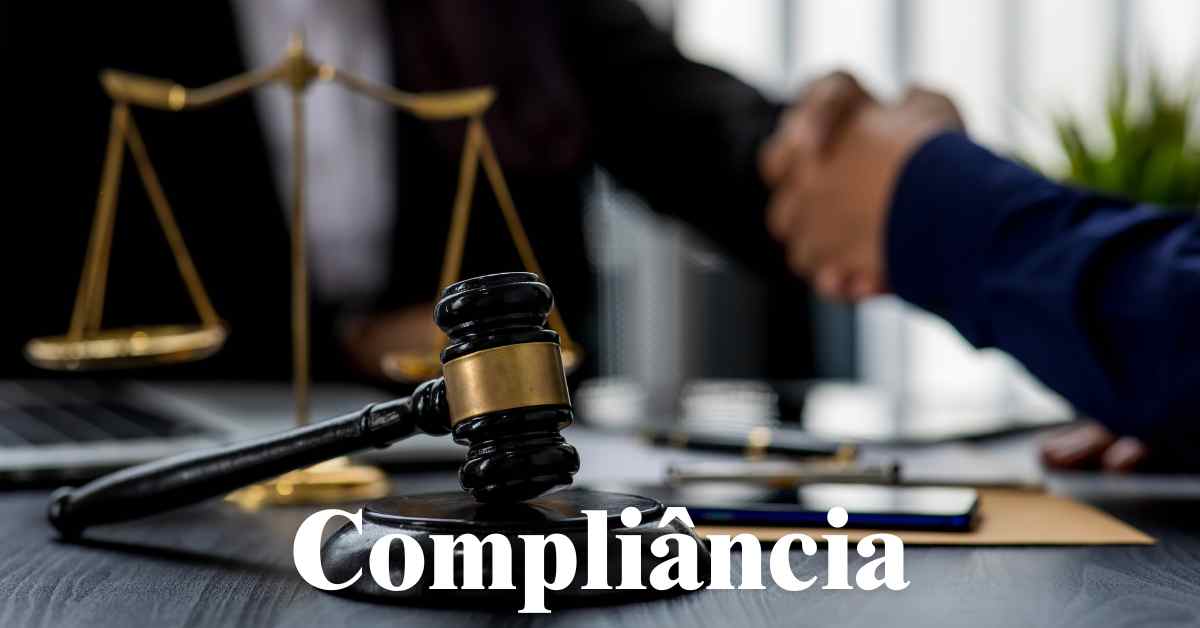In the increasingly complex world of business, navigating the myriad of rules and regulations can often feel overwhelming. This is where the concept of compliância, or compliance, becomes crucial. Compliância refers to adhering to laws, regulations, standards, and ethical practices set by governing bodies. These rules can be established by governments, industry associations, or even internal company policies. Understanding and implementing compliância is essential not only to avoid hefty fines and legal trouble but also to build trust and credibility with customers, partners, and investors.
The Importance of Compliância in Business
Legal and Regulatory Adherence
One of the primary reasons for adhering to compliância is to ensure that a business operates within the legal frameworks established by local, national, and international authorities. Non-compliance can result in severe penalties, including fines, sanctions, and legal action. For example, failing to comply with data protection regulations such as the General Data Protection Regulation (GDPR) can lead to significant financial penalties and damage to a company’s reputation.
Building Trust and Credibility
In today’s competitive market, trust is a valuable currency. Businesses that demonstrate a commitment to compliância are more likely to earn the trust of their customers, partners, and investors. Compliance with ethical standards shows that a company values transparency and accountability, which are critical factors in building long-term relationships and a positive reputation.
Risk Management
Compliância also plays a crucial role in risk management. By adhering to regulations and standards, businesses can mitigate various risks, including financial, operational, and reputational risks. Regular compliance audits help identify potential vulnerabilities and areas of non-compliance, allowing companies to address these issues proactively.
Key Areas of Compliância
Financial Compliance
Financial compliance involves adhering to regulations that govern financial transactions, reporting, and auditing. This includes following guidelines set by financial authorities, such as the Securities and Exchange Commission (SEC) in the United States or the Financial Conduct Authority (FCA) in the United Kingdom. Financial compliance ensures that a company’s financial practices are transparent and accurate, preventing fraud and financial mismanagement.
Data Protection and Privacy
With the increasing amount of data being collected and processed by businesses, data protection and privacy have become critical aspects of compliância. Regulations such as the GDPR in Europe and the California Consumer Privacy Act (CCPA) in the United States set strict guidelines on how personal data should be handled. Compliance with these regulations protects individuals’ privacy and prevents data breaches, which can have severe consequences for both individuals and businesses.
Environmental Compliance
Environmental compliance involves adhering to regulations that aim to protect the environment. This includes following guidelines on waste management, emissions control, and sustainable practices. Companies that comply with environmental regulations not only avoid legal penalties but also contribute to the global effort to combat climate change and promote sustainability.
Workplace Health and Safety
Ensuring the health and safety of employees is another critical aspect of compliância. Regulations such as the Occupational Safety and Health Administration (OSHA) standards in the United States set requirements for maintaining a safe work environment. Compliance with these regulations helps prevent workplace accidents and injuries, promoting the well-being of employees and reducing liability for the company.
Implementing Compliância in Your Organization
Identifying Applicable Regulations
The first step in implementing compliância is identifying all laws and regulations applicable to your industry and location. This requires a thorough understanding of both local and international regulations that impact your business operations. Engaging legal experts or compliance consultants can help in this process, ensuring that no critical regulations are overlooked.
Establishing Internal Policies and Procedures
Once the applicable regulations are identified, the next step is to establish internal policies and procedures that align with these regulations. This includes creating a compliance manual that outlines the company’s commitment to compliância, detailing the specific actions and behaviors expected from employees. Regular training sessions should be conducted to ensure that all employees understand and adhere to these policies.
Conducting Regular Audits
Regular compliance audits are essential to verify conformance with established policies and regulations. These audits should be conducted by internal teams or external auditors to ensure impartiality. Audits help identify areas of non-compliance and potential risks, allowing the company to take corrective actions promptly.
Creating a Culture of Compliance
Fostering a culture of compliance within the organization is crucial for the long-term success of compliância efforts. This involves promoting ethical behavior and accountability at all levels of the organization. Leadership should set an example by adhering to compliance standards and encouraging employees to report any violations or concerns without fear of retaliation.
The Role of Technology in Compliância
Compliance Management Software
Technology plays a significant role in modern compliance management. Compliance management software can streamline the process of tracking and managing regulatory requirements. These tools offer features such as automated reminders for compliance deadlines, real-time monitoring of compliance status, and centralized documentation storage, making it easier for companies to stay on top of their compliance obligations.
Data Security Solutions
Data security solutions are essential for ensuring compliance with data protection regulations. Encryption, access controls, and intrusion detection systems help safeguard sensitive information from unauthorized access and data breaches. Implementing robust data security measures is not only a regulatory requirement but also a critical component of maintaining customer trust and protecting the company’s reputation.
Environmental Monitoring Systems
For businesses subject to environmental regulations, technology can aid in monitoring and managing their environmental impact. Environmental monitoring systems can track emissions, waste generation, and resource consumption in real-time, allowing companies to ensure compliance with environmental standards and identify opportunities for improvement.
Challenges in Compliância
Keeping Up with Changing Regulations
One of the biggest challenges in compliância is keeping up with constantly changing regulations. Governments and regulatory bodies frequently update laws to address new risks and emerging issues. Businesses must stay informed about these changes and adapt their compliance strategies accordingly. This requires continuous monitoring of regulatory updates and a proactive approach to compliance management.
Balancing Compliance and Business Goals
Another challenge is balancing compliance with business goals. While compliância is essential, it should not hinder the company’s ability to innovate and grow. Businesses need to find ways to integrate compliance into their operations without compromising their strategic objectives. This involves aligning compliance initiatives with the company’s overall mission and goals, ensuring that compliance efforts support rather than obstruct business success.
Resource Constraints
Implementing and maintaining a robust compliance program can be resource-intensive. Small and medium-sized enterprises (SMEs) may face challenges in allocating sufficient resources, including time, money, and personnel, to compliância efforts. Leveraging technology and seeking external support, such as compliance consultants or legal experts, can help mitigate these challenges and ensure effective compliance management.
The Future of Compliância
Increased Focus on ESG Compliance
Environmental, Social, and Governance (ESG) compliance is gaining prominence as stakeholders increasingly demand that businesses address sustainability and social responsibility. Companies are expected to comply with ESG standards and report on their efforts to mitigate environmental impact, promote social equity, and ensure good governance. This trend is likely to continue, with regulatory bodies introducing more stringent ESG requirements.
The Role of Artificial Intelligence
Artificial intelligence (AI) is set to revolutionize compliância by enhancing the ability to analyze vast amounts of data and identify compliance risks. AI-powered compliance tools can automate routine tasks, such as monitoring transactions for suspicious activity or analyzing regulatory updates for relevant changes. This allows compliance teams to focus on more strategic activities and improves the overall efficiency of compliance management.
Globalization and Cross-Border Compliance
As businesses expand globally, cross-border compliance becomes increasingly important. Companies must navigate the complexities of complying with regulations in multiple jurisdictions, each with its own set of laws and standards. This requires a comprehensive understanding of international regulations and the ability to adapt compliance strategies to different regulatory environments.
Conclusion
Compliância is a fundamental aspect of operating a successful and ethical business in today’s complex regulatory landscape. By adhering to laws, regulations, and ethical standards, businesses can avoid legal trouble, build trust and credibility, and effectively manage risks. Implementing a robust compliance program involves identifying applicable regulations, establishing internal policies and procedures, conducting regular audits, and fostering a culture of compliance. Leveraging technology can further enhance compliance efforts, making it easier to track and manage regulatory requirements.
While challenges such as keeping up with changing regulations and balancing compliance with business goals exist, the future of compliância holds promising opportunities. Increased focus on ESG compliance, the role of AI in compliance management, and the complexities of cross-border compliance will shape the future landscape of compliância. By staying informed and proactive, businesses can navigate these challenges and ensure long-term success and sustainability.
Read More: Vlineperol: A Multifaceted Concept in the Digital and Health Worlds









